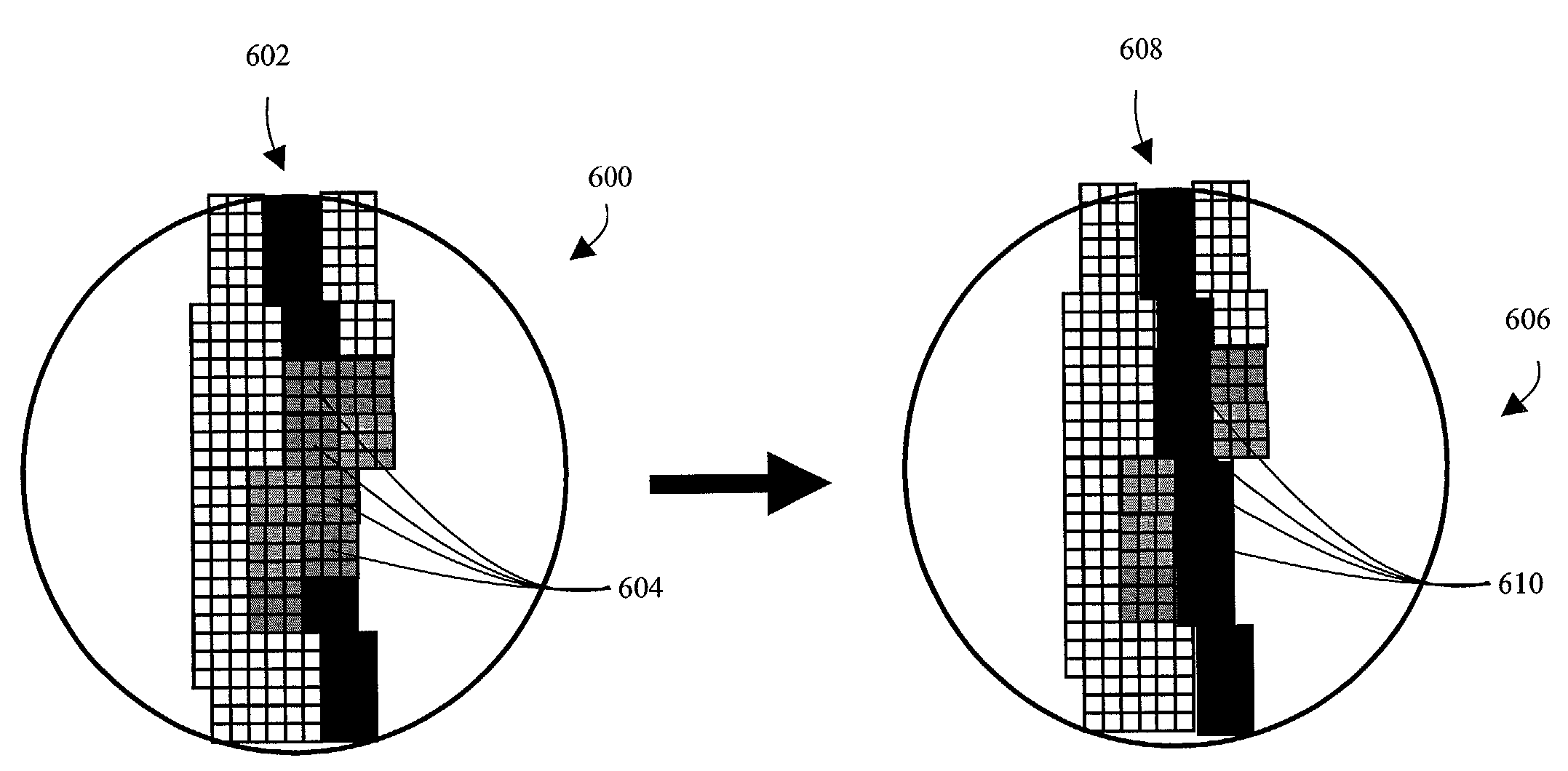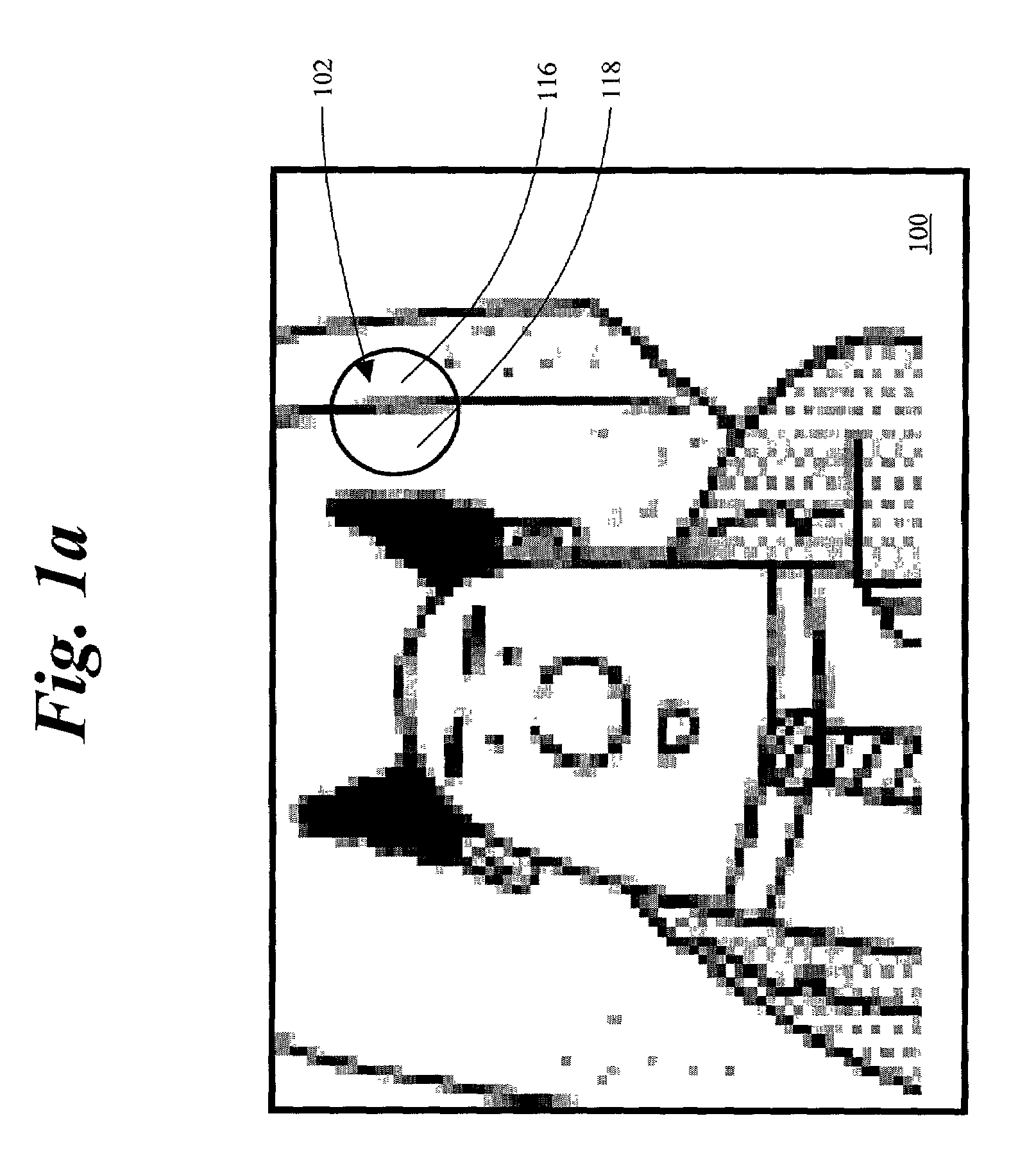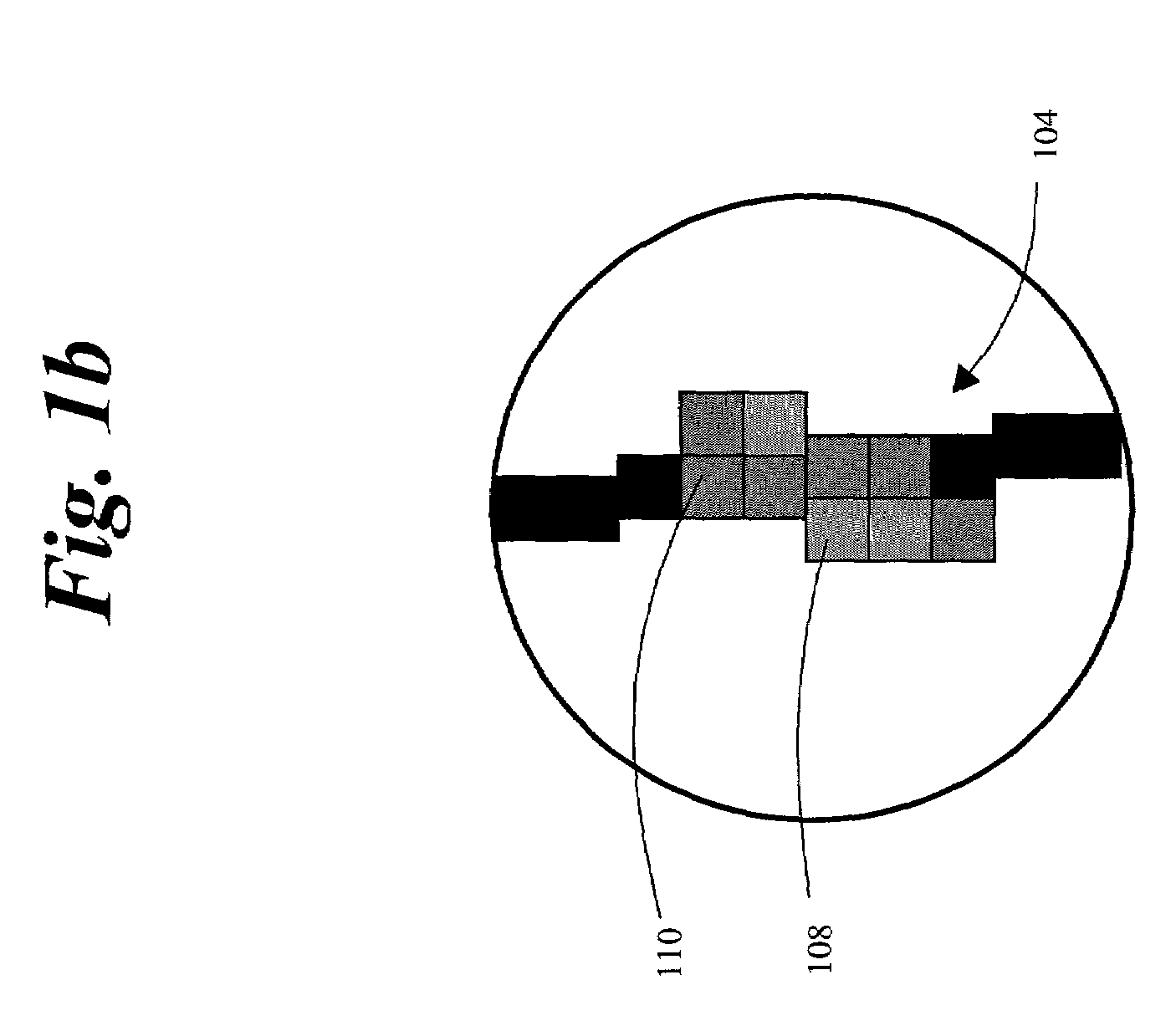Adaptive edge detection and enhancement for image processing
a technology of image processing and edge detection, applied in image enhancement, television systems, instruments, etc., can solve the problems of lossy compression, irretrievable loss of original data, and a considerable amount of data in an uncompressed video signal that is irrelevant, so as to improve image quality, enhance the edge of an image, and enhance the effect of true edg
- Summary
- Abstract
- Description
- Claims
- Application Information
AI Technical Summary
Benefits of technology
Problems solved by technology
Method used
Image
Examples
Embodiment Construction
[0032]FIG. 1a depicts an exemplary image that has been compressed and decompressed and includes a fuzzy edge. The image 100 has been compressed and decoded, such that it has various perceivable flaws. For example, a line 102 that should be a solid black line, includes lighter colored pixels. These lighter colored pixels have been created during the compression and decoding processes as a result of an attempt to represent a diagonal line within the constraints of a pixel matrix. The line 102 is an edge dividing two areas of substantially uniform image intensity 116, 118. FIG. 1b depicts an enlarged line 104 that is simply a magnified depiction of the line 102. The magnified line 104 exaggerates the perceivable flaws of line 102. For example, pixel 110 should be black (i.e., low image intensity), rather than gray (i.e., relatively higher image intensity). Similarly, pixel 108 should be white (i.e., high image intensity), rather than gray (i.e., relatively lower image intensity). As a ...
PUM
 Login to View More
Login to View More Abstract
Description
Claims
Application Information
 Login to View More
Login to View More - R&D
- Intellectual Property
- Life Sciences
- Materials
- Tech Scout
- Unparalleled Data Quality
- Higher Quality Content
- 60% Fewer Hallucinations
Browse by: Latest US Patents, China's latest patents, Technical Efficacy Thesaurus, Application Domain, Technology Topic, Popular Technical Reports.
© 2025 PatSnap. All rights reserved.Legal|Privacy policy|Modern Slavery Act Transparency Statement|Sitemap|About US| Contact US: help@patsnap.com



